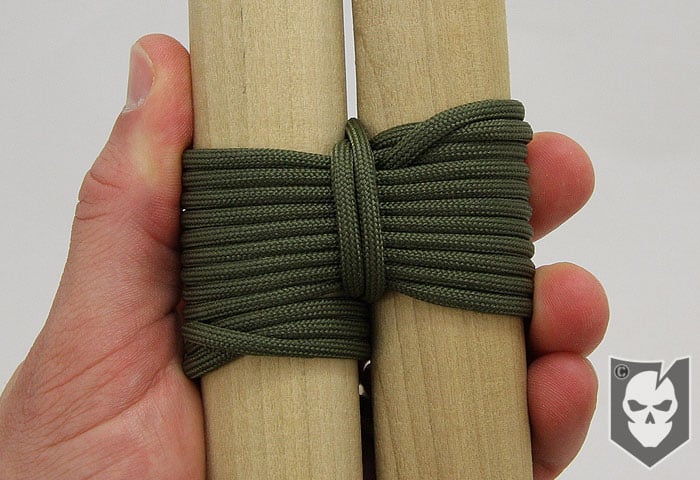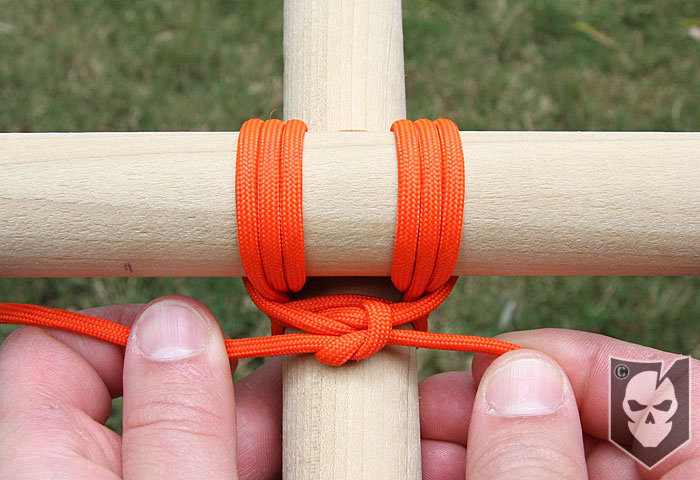Using Lashings for Weight Bearing Structures
After a brief hiatus, the Knot of the Week returns this week with the first of a few articles on lashings.
Lashings are an important part of any knotty professor’s repertoire, and an all around good skill to have. Today we’ll begin with the most common type of lashing, the Square Lashing.
A Square Lashing is used to bind two (timber) poles together, and commonly seen in use by the Boy Scouts on those massive pioneering projects. Weight bearing sections of these structures utilize the Square Lashing.
We’ve briefly touched on lashings in our article on Common Rope Seizing, which is technically also referred to as a Round Lashing.
Square Lashing » Lashings
(Strength: 5/Secure: 4/Stability: 3/Difficulty: 3)
Please refer to our Knot of the Week introduction post for a description of what these ratings mean.
Uses:
- Binding two timber poles together
- Weight bearing joint in structure building
Tying Instructions:
- Start your Square Lashing with a Clove Hitch on the vertical pole directly beneath the horizontal one.
- Working right to left with the working end, take it under and around the back of the horizontal pole, across the top of the vertical pole, down and around the back of the horizontal again and across the top of the vertical.
- Duplicate this at least three times, more if the poles are thicker.
- Ensure you’re creating tension with every wrap.
- Now make at least three frapping turns between the two poles, ending close to the opposite side of the vertical pole you started your initial Clove Hitch on.
- Finish off the lashing with another Clove Hitch and tuck in the excess working end into the wrappings.
- Optionally before creating the last clove hitch you can individually make turns around each section for added support, but it’s not necessary (this is demonstrated on the video but not photos).
[flickrset id=”72157624400276870″ thumbnail=”square” overlay=”true” size=”medium”]











Discussion